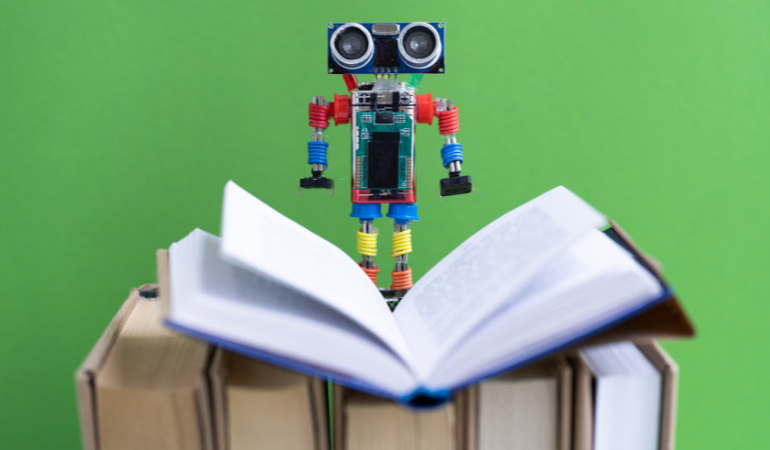From customer service departments to personal assistants like Alexa or Siri, most people have interacted with a chatbot at least once. It’s fascinating how smart they are, and one may wonder: how are chatbots trained?
Chatbots are trained to predict users’ queries and provide responses that meet their needs. Chatbots like BanglaChatbot, for example, can give realistic responses that often feel like you’re chatting with a human. However, achieving this level of interaction requires several stages of training by skilled bot developers.
As businesses increasingly use bots in online marketing, customers are interacting with them more frequently. It’s crucial, then, to train chatbots properly to provide a satisfying experience for each user. Chatbot training is an ongoing process. Just like you’d train a pet, you need to continuously teach your chatbot new things to keep it effective. If not properly trained, a chatbot could frustrate clients, which is the last thing any business wants.
To understand how chatbots are trained, it’s helpful to know a few essential steps and terms involved in the process.
Key Technical Terms in Chatbot Training
Chatbot training is typically associated with bots powered by artificial intelligence (AI). Here are some basic AI terms you should know before delving into the training process:
Natural Language Processing (NLP)
Natural Language Processing (NLP) is the ability of an AI-powered chatbot to understand and analyze human language, find the appropriate response, and reply in a way that feels natural. NLP allows chatbot conversations to feel like a real human interaction, similar to how you might talk to Siri on an Apple device.
NLP in chatbots can be further divided into two parts:
- Natural Language Understanding (NLU): This focuses on a chatbot’s ability to comprehend human language and interpret the intent behind it. The bot translates human language into machine language to process it correctly.
- Natural Language Generation (NLG): After processing the user’s command, NLG enables the chatbot to convert machine language back into human language, creating a response that feels natural. You can think of it as the bot forming an idea and expressing it in words.
Other Key Terms in Chatbot Training
- Utterances: These are phrases or sentences that a user might say to the chatbot.
- Intents: This represents the user’s main goal or purpose in a query.
- Entities: These are additional details that provide context to the intent.
For example:
If a user asks, “What is today’s latest world news?”
- The intent is “news”; the user wants information.
- The entities are “today’s,” “latest,” and “world,” providing extra context to specify the query.
With a solid understanding of these key terms, you’re ready to explore the training process itself.
How to Train a Chatbot
Training a chatbot involves gathering a diverse set of sample conversations and identifying the intents, utterances, and entities within them. By feeding this data to the chatbot, you help it recognize various patterns in user queries. Training a chatbot like BanglaChatbot means continually refining it to ensure it can handle new questions, provide accurate answers, and deliver a better user experience over time.

Tips for Training Your Chatbot to Understand User Queries
To ensure your chatbot can effectively handle various user queries, follow these steps for optimal training.
Define the Specific Purpose of the Chatbot
The first step is to define the specific purpose your chatbot will serve. While chatbots like BanglaChatbot can perform many tasks, it’s best to start by addressing one primary problem. Many businesses make the mistake of overloading their chatbots with too many functions, which complicates the training process. Focus on a significant issue your business faces.
For example, if you plan to build a bot that reminds customers of their appointments, but only a small percentage of your queries involve appointment reminders, consider redefining the bot’s purpose to address a higher-priority need.
Ensure Intents are Distinct
To avoid confusion and improve user satisfaction, create clear, specific intents for your chatbot. Each intent should represent a distinct purpose or query that the bot can respond to effectively.
Include Multiple Utterances for Each Intent
Every intent should contain a variety of utterances. For instance, if the intent is to “make a purchase,” provide multiple ways users might phrase this, such as:
- “I want to buy something.”
- “I want to make an order.”
- “I want to purchase an item.”
This helps the chatbot recognize different ways users might express similar needs.
Involve Multiple Teams in the Training Process
Using several teams or individuals in the training process ensures a range of perspectives, preparing your bot for a wider variety of queries and interactions.
Ensure Entities are Purposeful
When training, focus on entities—the specific keywords or phrases that provide essential information. Identify these elements to allow the bot to extract relevant information from user queries without needing to tag every word or phrase in an utterance.
Add Personality
Giving your chatbot a personality that aligns with your brand can make interactions more engaging. Even if your business maintains a professional tone, find ways to make the chatbot personable and enjoyable for users to interact with.
Don’t Rely on Text Alone
Incorporate interactive elements like buttons, GIFs, emojis, and cards to make the conversation more dynamic. This keeps users engaged and improves the overall experience.
Continuously Train and Improve
Chatbot training should be ongoing. Regularly update and enhance your chatbot to keep pace with evolving user needs and stay ahead of competitors. Always strive for improvements to maintain a high-quality user experience.
By following these steps, you’ll be well on your way to training a highly effective chatbot like BanglaChatbot that can handle diverse queries and deliver a great customer experience.

Leave A Comment